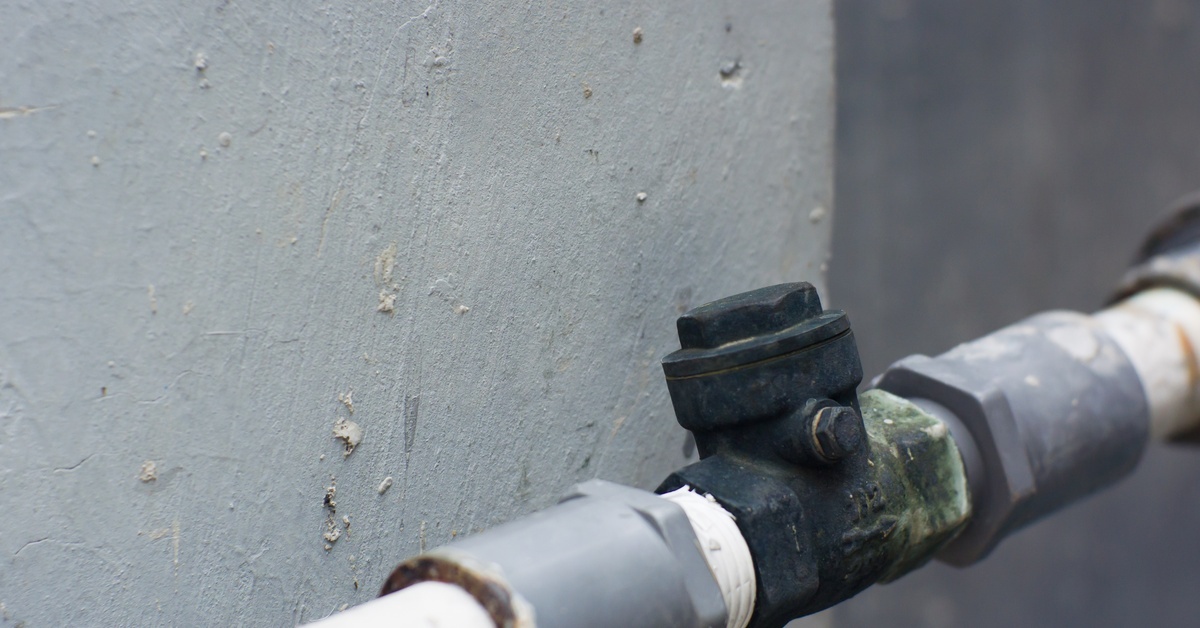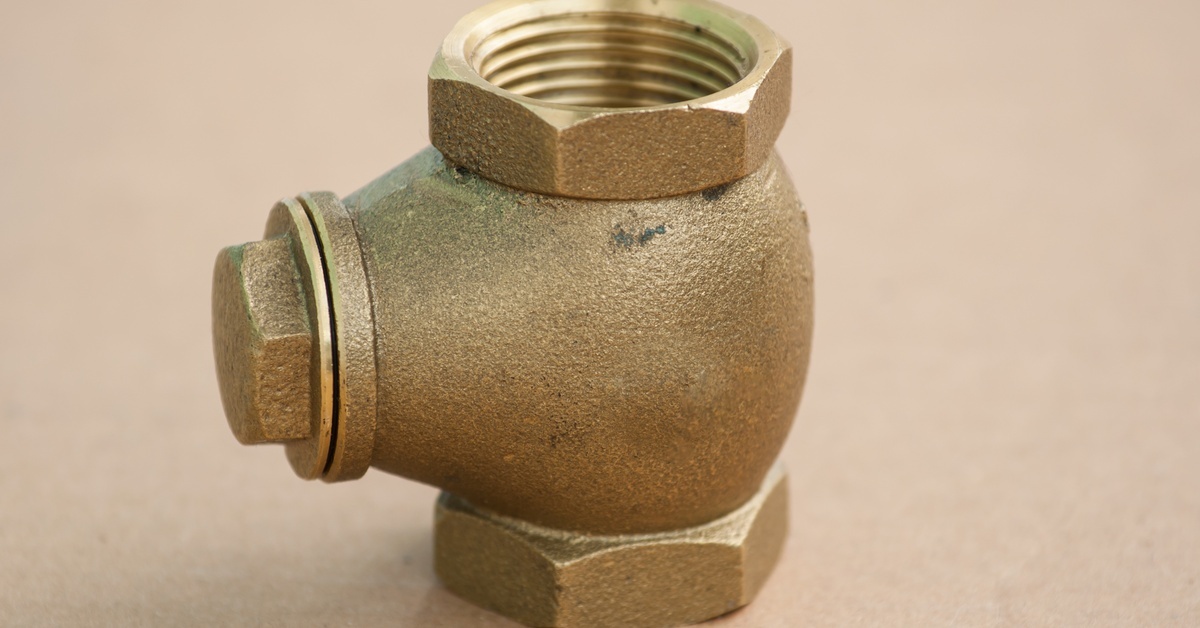12th Mar 2025
The Complete Guide To Swing Check Valves
Swing check valves are an essential component in plumbing systems, particularly when controlling the direction of flow is critical. For professionals such as contractors and plumbers, understanding how these valves function and how to work with them effectively is fundamental to ensuring efficient system operations and protecting infrastructure.
This comprehensive guide to swing check valves will walk you through everything you need to know about these essential parts—from their purpose and benefits to installation, troubleshooting, and maintenance. Find out how you can leverage these valves to your benefit today.
Understanding Swing Check Valves
Swing check valves allow fluid to flow in one direction and automatically prevent backflow. Their primary purpose in plumbing systems or pipelines is to ensure a unidirectional flow of liquids or gases while safeguarding the system from potential damage caused by reverse flow. Commonly used in water systems, sewer lines, and industrial applications, these valves play a vital role in maintaining system integrity.
The valve operates with a disc, or "clapper," inside the body. This disc swings open when forward flow occurs and closes when the flow stops or reverses direction. This simple yet innovative design makes swing check valves an ideal solution for preventing backflow, which could compromise water quality or damage critical components.
How Swing Check Valves Work
Swing check valves utilize a straightforward but highly efficient mechanism. Inside the valve body, the swinging disc has a hinge at the top and moves freely in response to the pressure of the fluid. When liquid or gas flows in the intended direction, the force pushes the disc open, allowing uninterrupted movement through the valve.
When the forward flow decreases or ceases altogether, gravity and back pressure force the disc to swing back into the closed position, sealing the valve shut. This prevents any reverse flow from passing back through the system, ensuring the downstream components remain free from contamination or damage.
Swing check valves are non-powered devices, relying solely on the forces within the system. This simplicity reduces the need for constant monitoring and minimizes maintenance demands, making them a practical choice for many applications in residential, commercial, and industrial settings.

Benefits of Using Swing Check Valves
Swing check valves offer numerous advantages for plumbing systems, enhancing both performance and reliability. One of their key benefits is the prevention of water hammer—a phenomenon where pressure surges create a loud banging noise and stress within the pipes. Swing check valves reduce this risk by allowing a gradual shut-off, reducing shock in the system.
These valves also protect equipment downstream by preventing backflow. Without this precaution, reverse flow can lead to contamination, equipment damage, or system inefficiencies. Areas that rely heavily on clean water or sensitive equipment especially benefit from the use of swing check valves.
Additionally, the simplicity of their design makes swing check valves highly reliable. With few moving parts, they are durable and less prone to wear and tear. The low maintenance requirements and cost-effectiveness ensure an optimal balance of performance and affordability for contractors and plumbers managing various systems.
Types of Swing Check Valves
Understanding the different types of swing check valves available can help contractors and plumbers select the ideal design for specific applications. A standard swing check valve is the most common choice, featuring a straightforward disc and hinge mechanism that's suitable for general-purpose plumbing needs.
For more specialized applications, Y-pattern swing check valves offer unique advantages. Their angular body design provides smoother flow paths and minimizes obstructions. This design is particularly beneficial in systems requiring high flow rates or where debris buildup might be a concern, as it reduces the risk of clogging.
Flanged and threaded swing check valves are also available, differing in how they connect to the pipeline. These variations provide flexibility in installation and compatibility with a range of pipe materials and sizes, ensuring contractors can choose the right valve for the job.
Installation Tips for Swing Check Valves
A complete guide to swing check valves must dive into the setup process. Proper installation of swing check valves is paramount to their effectiveness and longevity.
Always position the valve in alignment with the directional flow arrow marked on its body. Installing the valve in the wrong orientation may result in functionality issues and potential damage to the system. Ensure that the pipeline is free from debris, as foreign particles can interfere with the valve's operation.
Swing check valves are better suited for horizontal installations, where gravity assists the disc in closing. However, they can also be successfully installed in vertical pipelines as long as the flow direction is upward.
Using the appropriate flanged or threaded fittings and ensuring a secure, leak-free connection is essential. Over-tightening connections or misaligning the valve can cause stress, leading to premature wear or failure. Testing the system after installation is crucial to confirm the valve is working correctly and sealing properly under operating conditions.

Common Issues and Troubleshooting
While swing check valves are generally low-maintenance, some issues can arise over time that require attention. A common problem is the presence of debris within the valve, which can prevent the disc from closing fully and cause backflow. Regularly cleaning and inspecting the valve can address this issue.
Wear and tear on the hinge or disc is possible, especially in high-use systems. Replacing worn components promptly can prevent complete valve failure and maintain system reliability. You can easily track down new PVC check valves that will help you make swift, successful repairs. If the valve continues to malfunction despite troubleshooting efforts, replacing the entire unit may be more cost-effective than repeated repairs.
Maintenance Best Practices
Routine maintenance is essential to prolong the lifespan of swing check valves and ensure optimal performance. Regularly inspect the valve for signs of wear, leaks, or corrosion. Cleaning the internal components, such as the disc and seat, can prevent debris buildup and ensure smooth operation.
Lubricating the hinge mechanism periodically can reduce friction and wear, especially in applications with frequent use. Always ensure that the system is depressurized and safe to work on before conducting any maintenance tasks. Creating a routine maintenance schedule can help contractors and plumbers stay ahead of potential issues and minimize unexpected system downtime.
Mastering Swing Check Valves for Reliable Plumbing
Swing check valves are a critical component of any well-functioning plumbing or pipeline system. From their straightforward design to their ability to prevent backflow and water hammer, their significance is clear. By understanding their construction, benefits, and proper use, contractors and plumbers can make informed decisions to ensure efficient operations.
Applying best practices for installation, troubleshooting, and maintenance will not only extend the lifespan of these valves but also uphold the reliability of the systems they serve. Whether managing a residential water supply, a commercial sewer line, or an industrial pipeline, swing check valves are an indispensable ally for every professional in the field. Follow this guide now to ensure you maximize the potential of your swing check valves upon installation.

